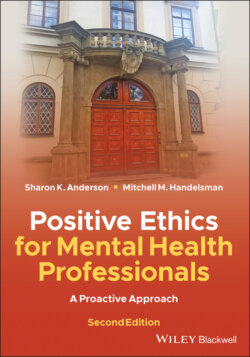Читать книгу Positive Ethics for Mental Health Professionals - Sharon K. Anderson - Страница 13
Practicing Ethics in the Real World: Tripping Points and Balancing Acts
ОглавлениеIn our dialogues throughout this book, we will pay attention to practicing ethics in the real world, not just studying theory or platitudes. If ethical decisions were that easy, we wouldn’t need courses, books, consultants, regulatory agencies, licenses, hearings, malpractice courts, and so forth. But our professional mansion is big, complex, and constantly under renovation. Thus, ethical judgments and actions are difficult at best—and there are conditions in the real world that add to the difficulty.
The spiral staircase of ethics is sometimes treacherous, in part because human beings are not naturally good at making choices and decisions. We are prone to imperfect cognitions (think: uneven stairs), especially under conditions of uncertainty (Kahneman & Tversky, 1973)—which includes the practice of psychotherapy. We are also imperfect when emotions are involved—which they always are! Thus, our tendencies toward imperfect cognitions are magnified by emotional involvements (like slippery stairs) that include conflicts of interest, liking or disliking (of colleagues, clients, the “system,” our lives, etc.), and other emotional biases. As if that weren’t enough, situational factors can act like turning off the lights on the staircase—they make our climb more difficult, and they exacerbate our cognitive and emotional tendencies. We can be blind to our own blind spots.
With apologies to Gladwell (2000), we call these factors tripping points. They can make it hard to develop and maintain a professional identity, stay positive, make good ethical decisions in the moment, and choose good acculturation strategies.
